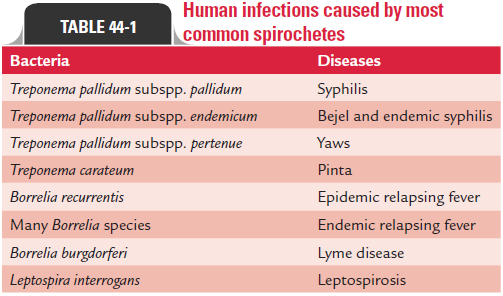Chapter: Microbiology and Immunology: Bacteriology: Treponema, Borrelia and Leptospira
Treponema
Treponema
The generic name Treponema is derived from the Greek word Trepos, meaning to turn and nema, meaning thread. The trepo-nemes are short and slender spirochetes with fine spirals and pointed ends. Some of them are pathogenic for humans, while others occur as commensals in the mouth, intestine, and genitalia. Pathogenic members of the genus include Treponemapallidum (with three subspecies) and Treponema carateum. Allthese species:
· are morphologically identical,
· produce same serological responses in infected humans, and
· are sensitive to penicillin.
These species, however, differ in their:
· clinical manifestations,
· natural history of the disease they cause, and
· epidemiological features.
As for recent nomenclature and taxonomical studies, species T. pallidum consists of T. pallidum subspp. pallidum causing vene-real syphilis, T. pallidum subspp. endemicum causing endemic syphilis or bejel, T. pallidum subspp. pertenue causing yaws, and T. carateum causes pinta. In this book, T. pallidum subspp. palli-dum is referred to as T. pallidum, T. pallidum subspp. pertenue as T. pertenue, and T. pallidum subspp. endemicum as T. endemicum for the sake of familiarity.
Treponema pallidum
T. pallidum is the causative agent of syphilis, the most commonsexually transmitted disease.

Related Topics